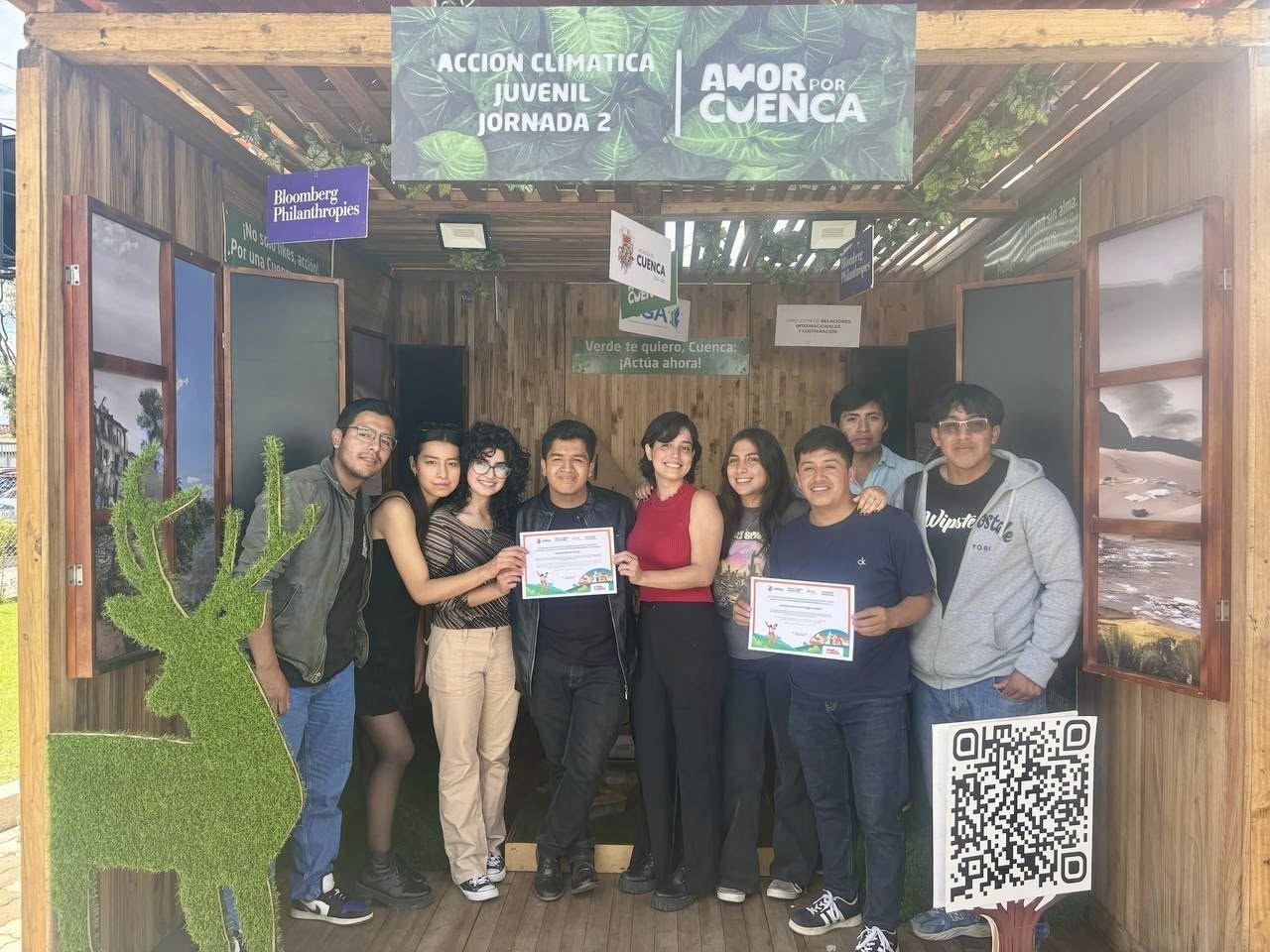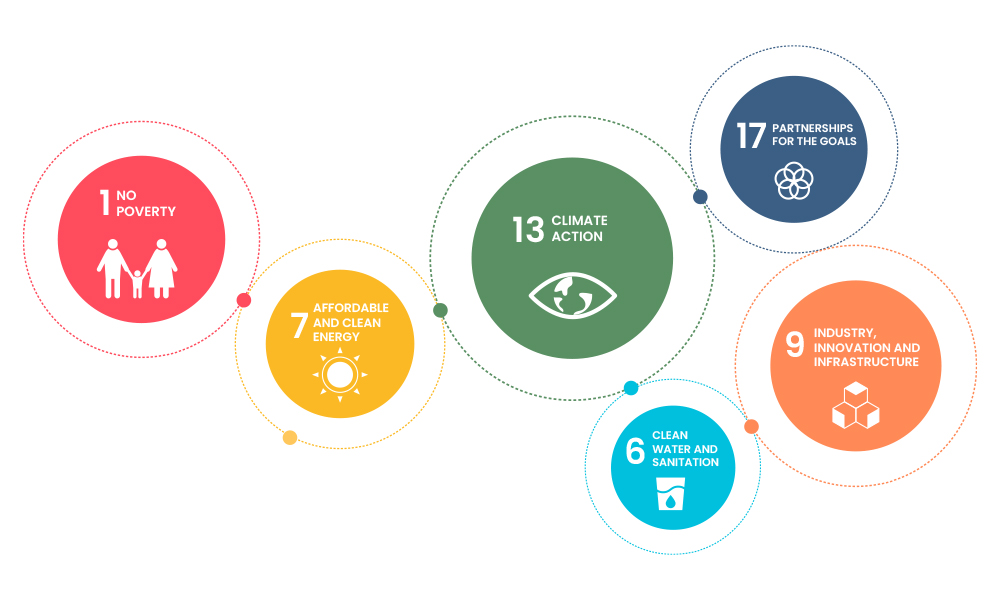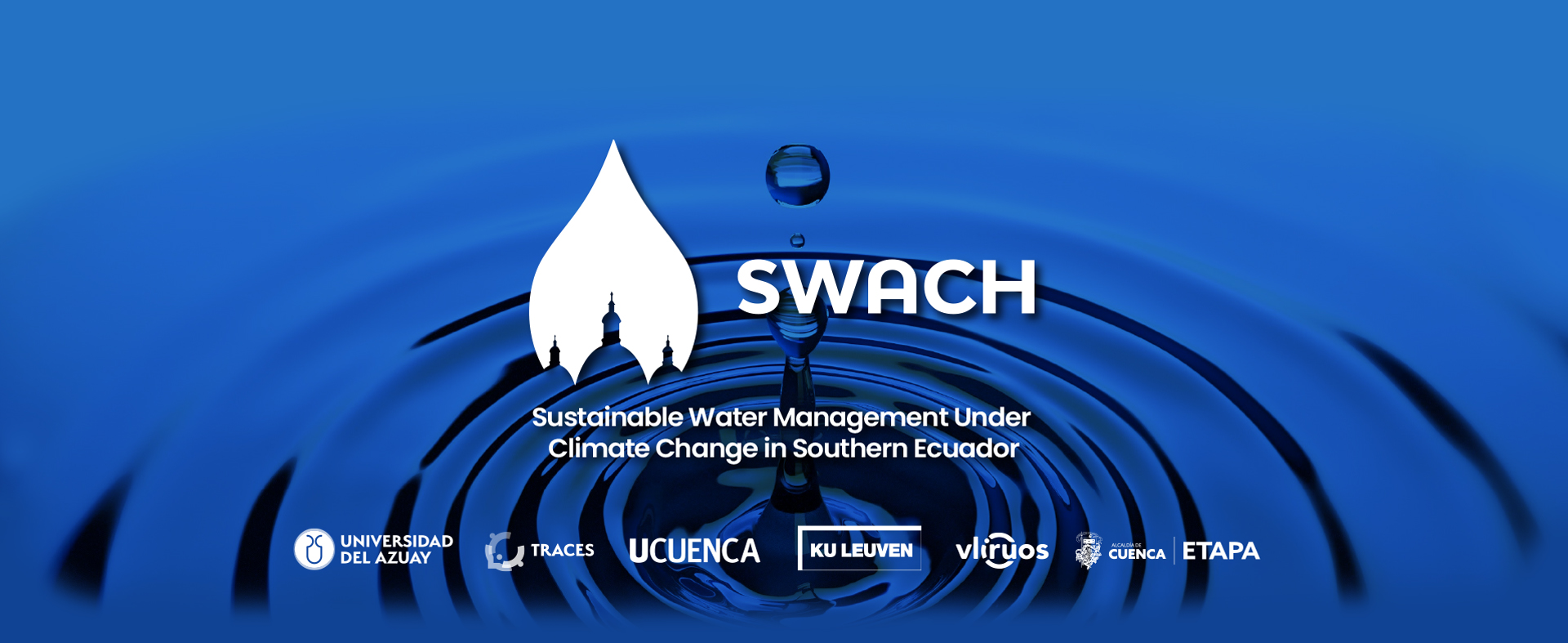News
Centinelas SWACH: jóvenes que lideran el cambio por el agua y el clima
SWACH se une a los 6K por el Agua: un paso más por la conciencia hídrica

Jóvenes de SWACH reciben reconocimiento por liderar propuestas de acción climática en Cuenca

Impact statement

Objectives
To reduce long-term uncertainty of climate, hydrological, and population growth predictions in order to assess water availability under different climate change scenarios and patterns of water consumption across various social sectors.
To propose water resource management strategies for the Tomebamba River basin that incorporate nature-based solutions.
To propose water consumption reduction strategies in residential areas based on a pilot plan aimed at understanding consumption habits in three neighborhoods supplied by the Tomebamba River basin.
SWACH is formed by researchers from the Civil Engineering, Hydraulics and Geotecnics Department at KU Leuven, Belgium; TRACES research group at Universidad del Azuay, iDRHiCA department at Universidad de Cuenca and the institution that provides drinking water to Cuenca ETAPA EP.
Network
SWACH is a collaborative initiative composed of researchers from the Department of Civil Engineering, Hydraulics, and Geotechnics at KU Leuven (Belgium), the TRACES research group at Universidad del Azuay, the iDRHiCA Department at Universidad de Cuenca, and ETAPA EP (public utility responsible for providing drinking water to the city of Cuenca).
Project Development
PHASE 1
During the first phase of the project, the objective is to determine changes in water availability for the period 2025–2050. This involves quantifying precipitation, temperature, and discharge projections under climate change scenarios, along with forecasting the evolution of water demand in the city of Cuenca.
PHASE 2
In the second phase, efforts will focus on the design and testing of solutions for improved water management, using integrated models to propose strategies that are more effective, cost-efficient, and feasible. Additionally, water consumption reduction measures will be tested through a pilot project in three neighborhoods of Cuenca.
STUDY AREA

The study area is the Tomebamba River basin, one of the main sources of drinking water supply for the city of Cuenca, located in southern Ecuador at an elevation of 2,600 meters above sea level.
Cuenca is a medium-sized city (~600,000 inhabitants), the third most important in Ecuador, and is recognized as a pioneer in water resource management. SWACH builds on significant efforts carried out over the past decade to monitor and study water resources in both the High Andean páramo ecosystems and the urban area of Cuenca.
Three neighborhoods—Villanueva, La Prensa, and Casa para Todos—were selected for the pilot project in the city. The aim is to understand water consumption habits through surveys conducted during May and June 2023. More than 200 surveys will help identify consumption patterns and behaviors in these sectors of the city. As shown in the image, there are households across Cuenca with high water use, exceeding 30 m³ per month.


